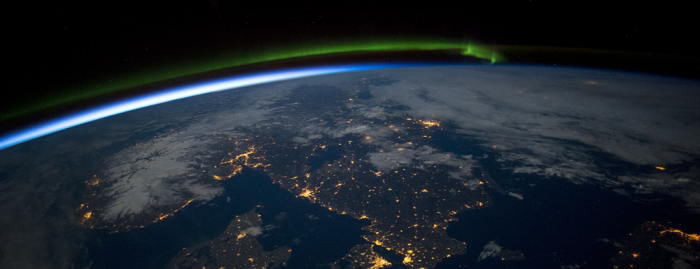You don’t need to send satellites into space or strap yourself into a rocket. Here are three very simple ways we can see for ourselves that the surface of the Earth is indeed curved.
1. Objects drop over the horizon
The horizon may appear flat from left to right as we look at it, but we can see that as objects get more distant, the bottom of them starts to become hidden.
The classic example is ships, but you can see the same effect with power lines and even chess pieces.
If the Earth was flat then objects would get progressively smaller as they got more distant, and eventually get lost in haze due to the atmosphere, but we wouldn’t see them drop away like we do.
2. You can see more from higher up
Related but slightly different is the fact that the higher your viewpoint, the further away the horizon gets and the more you can see.
It’s why the sun rises earlier and sets later at high altitudes.It can even be as simple as watching the sunset over a clear horizon while lying on the floor, then standing up just as it disappears – you should be able to see the top of the Sun again.
If the Earth was flat this wouldn’t be possible – objects would always be visible from any height at the same distance provided there were no obstacles in between.
3. The night sky looks different depending on your location
This one requires a bit of travelling to see for yourself but the night sky can change dramatically as you move around the planet. If you live in the Northern Hemisphere and travel to the Southern Hemisphere, you’ll see some different constellations and the moon will appear to be upside down!
Even travelling within the same hemisphere can alter which stars you see. The Southern Cross is actually visible from the southernmost latitudes of the northern hemisphere but not in more northern areas.
This wouldn’t happen on a flat Earth – if we were all standing on the same flat plane we’d all see the same stars, and they and the moon would be oriented the same way for everyone.
Cover image by NASA.
This article was written as part of my November writing challenge, a NaNoWriMo-inspired attempt to write one short, snappy article a day in November. Please excuse brevity, but let me know if I’ve missed anything important!
